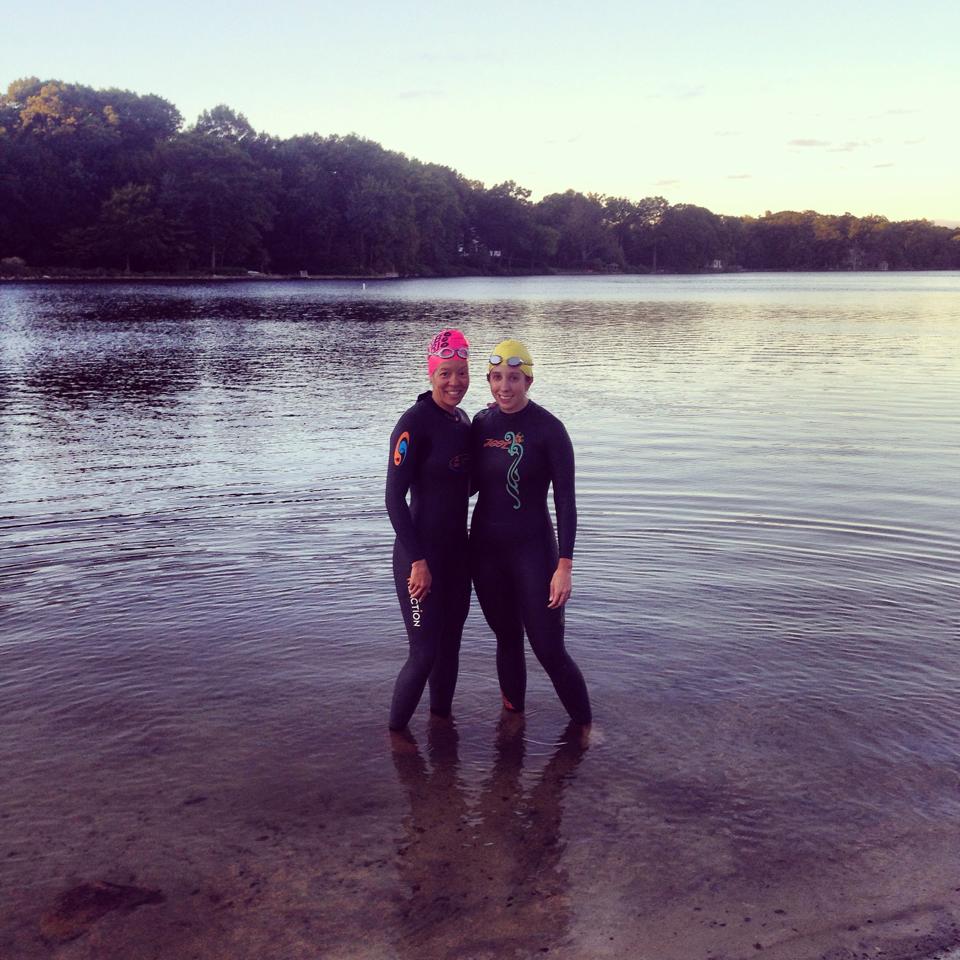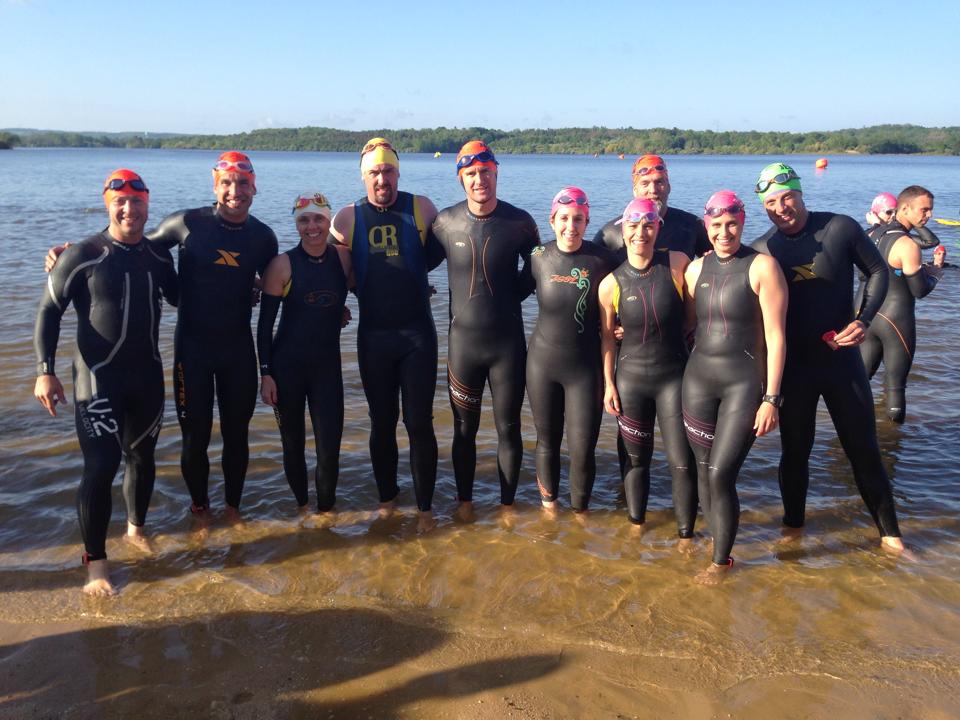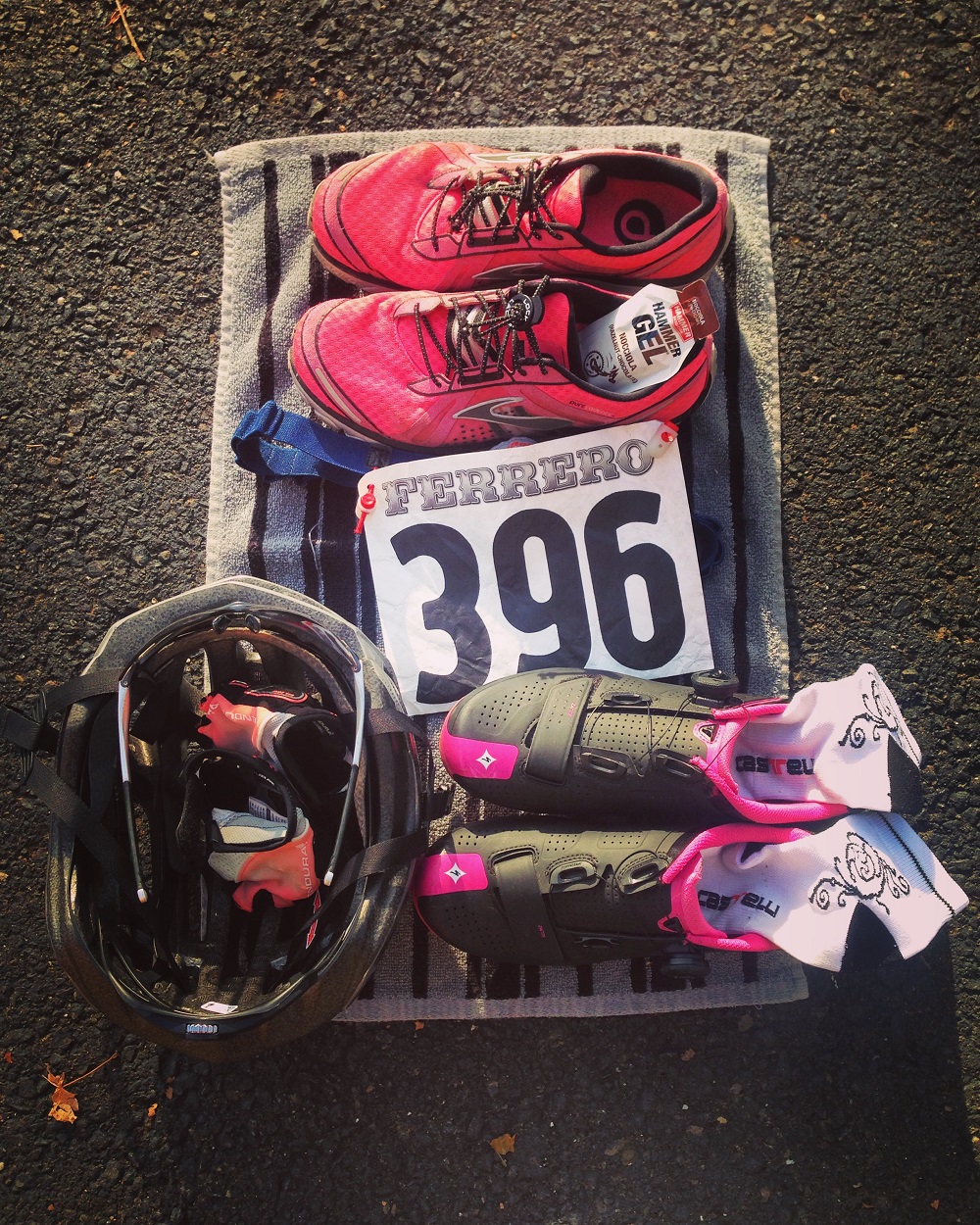I recently had a conversation with two different people who were both thinking of signing up for their first sprint triathlons this summer. One of these people felt confident that she could complete the race, but had a lot of questions regarding race logistics. The other person had more concerns about being able to find the time to train for all three legs of the race. I honestly believe that anyone can complete a sprint triathlon without having to spend a ton of money on equipment or having to dedicate their whole life to training. If you are thinking about competing in your first sprint triathlon here are some basic things you should know about training, equipment, and setup.
The amount of training you need to do for a sprint does not need to be overwhelming and life consuming, as the race itself is relatively short. Training for a sprint is something anyone can find the time for without it taking over their life. You can probably even work it into your normal weekly exercise routine. For example, if you typically take spin class at the gym, take your normal class and then right after the class, make the time to hop on the treadmill and run a mile or two. This should only add another 10-20 minutes to your normal exercise routine (you could even leave class a few minutes early to do this if you are short on time). If the race you plan on signing up for is something close to the following distances: ¼ mile swim, 12 mile bike, 5K run, then the race itself should take you approximately two hours to complete as a newbie (possibly less depending on your ability). You don’t need to train for 15 hours per week for a race that will only be around 2 hours long.
Here is a possible and manageable weekly training schedule for a newbie looking to do a sprint:
- Monday – 45-60 minute spin class, followed by a 15 minute treadmill run
- Tuesday – 30 minute swim
- Wednesday – day off
- Thursday – 30 minute swim (or open water swim), followed by a 20-30 minute run
- Friday – day off
- Saturday – 1 hour bike ride
- Sunday – 1 hour bike ride, followed by a 20-30 minute run off the bike
- Total weekly training time – 5-6 hours (less than one hour per day on average)
**Keep in mind that this is just a basic schedule for someone who wants to be able to complete the race. More structured training would be great, but this is just about the basics**
Here are some thoughts and tips for training:
• Make sure you can complete the distance of each leg without it being an extreme challenge. For example, if the bike leg is 12 miles, make sure you complete several 12 mile bike rides before race day, even do some 15-20 miles rides, so 12 miles seems like no problem (you don’t need to do a 40 mile ride to compete in a 12 mile race, unless you want to).
• You should definitely practice your bike-to-run transition. Your legs usually feel kind of rubbery when you start running off the bike and it is a good idea to get a feel for that before race day.
• As a newbie, I would definitely try to get in a few open water swims before your first race. I didn’t do this and I wish I had. Swimming in the pool is great, but getting out in to the open water is a different experience.
• Don’t swim alone in the open water. Find a local triathlon club and I guarantee that some of the members will be going out for open water swims. Introduce yourself and ask if you can join them. You can even buy a buoy or bring one of those foam noodles for an added sense of security if you are nervous about swimming in the open water.

Make sure you don’t swim in the open water alone. Find a friend or group to train with in the open water.
On race day, make sure you get to the race early so you can get set up and have plenty of time to ask other athletes, or volunteers for help if you have questions.
Setting up your transition:
– Bring a towel or small rubber mat (I just use an old beach towel).
– Place your mat/towel on the side of the rack where you bike wheel is down toward the ground.
– Only take up as much space as you need. Sometimes space is limited and you want to leave the other athletes some room for their equipment.
– Lay out everything you will need for each leg of the race.
– For the bike, you need shoes, sunglasses and a helmet and also possibly gloves and socks (some people ride without gloves and socks because they are not essential and the less things you have to put on the quicker your transition will be).
– For the run, you may need to change shoes if you have cycling shoes or if you ride in your running sneakers you will just need to take off your helmet and put on your race number.
– Make sure you either buy a race belt or have your number pinned on to an extra shirt ahead of time, so you can just quickly put this on and move from the bike portion of the race to the run portion. You don’t want to have to pin your number on during transition. Your body will be marked with your number, but in most races you do have to wear a bib number as well for the run and you risk being disqualified if you do not have this on.
As far as equipment goes, just use what you have for your first race. No need to run out and invest a ton of new equipment.
• For the swim, make sure you have a decent pair of goggles (you are usually provided with a swim cap as part of the race).
• If the race is one where you can wear a wet suit, you don’t need to go out and buy one. Websites like wetsuitrental.com will rent you a suit for $50-$60 and if you do decide to buy one they may even put that money you spent on the rental toward your new wetsuit.
• Use whatever bike you have, hybrid or old mountain bike, road bike it doesn’t matter. You will probably not win the race on a forty pound mountain bike, but if you become hooked on triathlons you can always go out and buy a nicer bike at that point.
• For the run, use the sneakers you have been running in. You can buy a new pair, but make sure you break them in a bit before race day.
• The only item I would recommend buying for the run, is a race belt. You can buy one of these for ten dollars or less and it makes life a lot easier during the race. Instead of having to pin your bib number on for the run, you attach it to this belt and you can just quickly clip this around your waist when heading out for the run leg of the race.
• Lastly, make sure you bring some kind of energy food to eat in transition or during a leg of the race. For a short race, one energy gel or some other small amount of food should be sufficient. This will help you to have enough energy and feel good throughout the race.
I honestly believe that anyone can complete a sprint triathlon without having to give up their life to train or having to spend an insane amount of money. Once you fall in love with the sport, then you can go nuts and get a coach and a plan and train for fifteen hours a week and buy thousands of dollars’ worth of high tech equipment. 🙂


